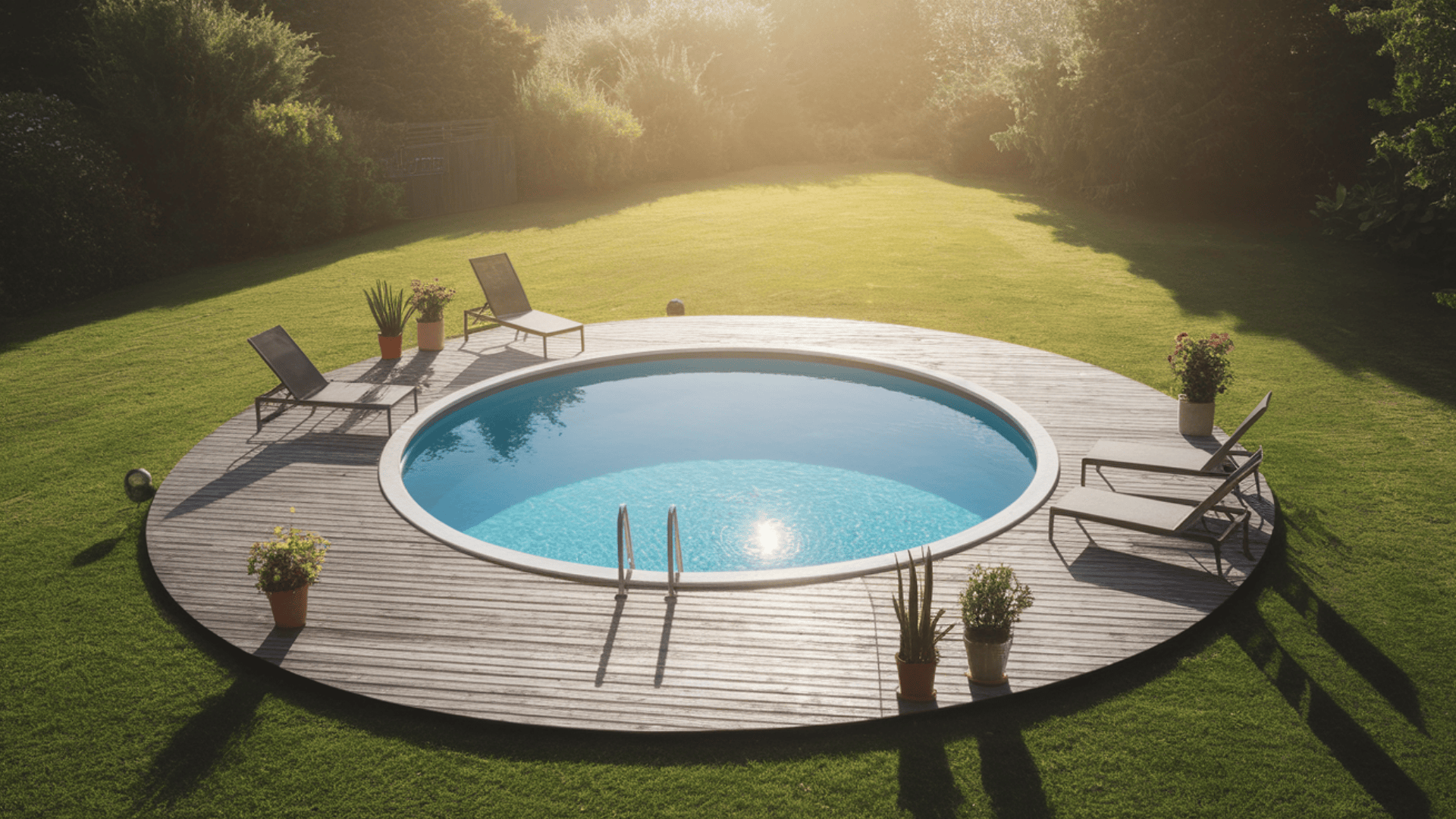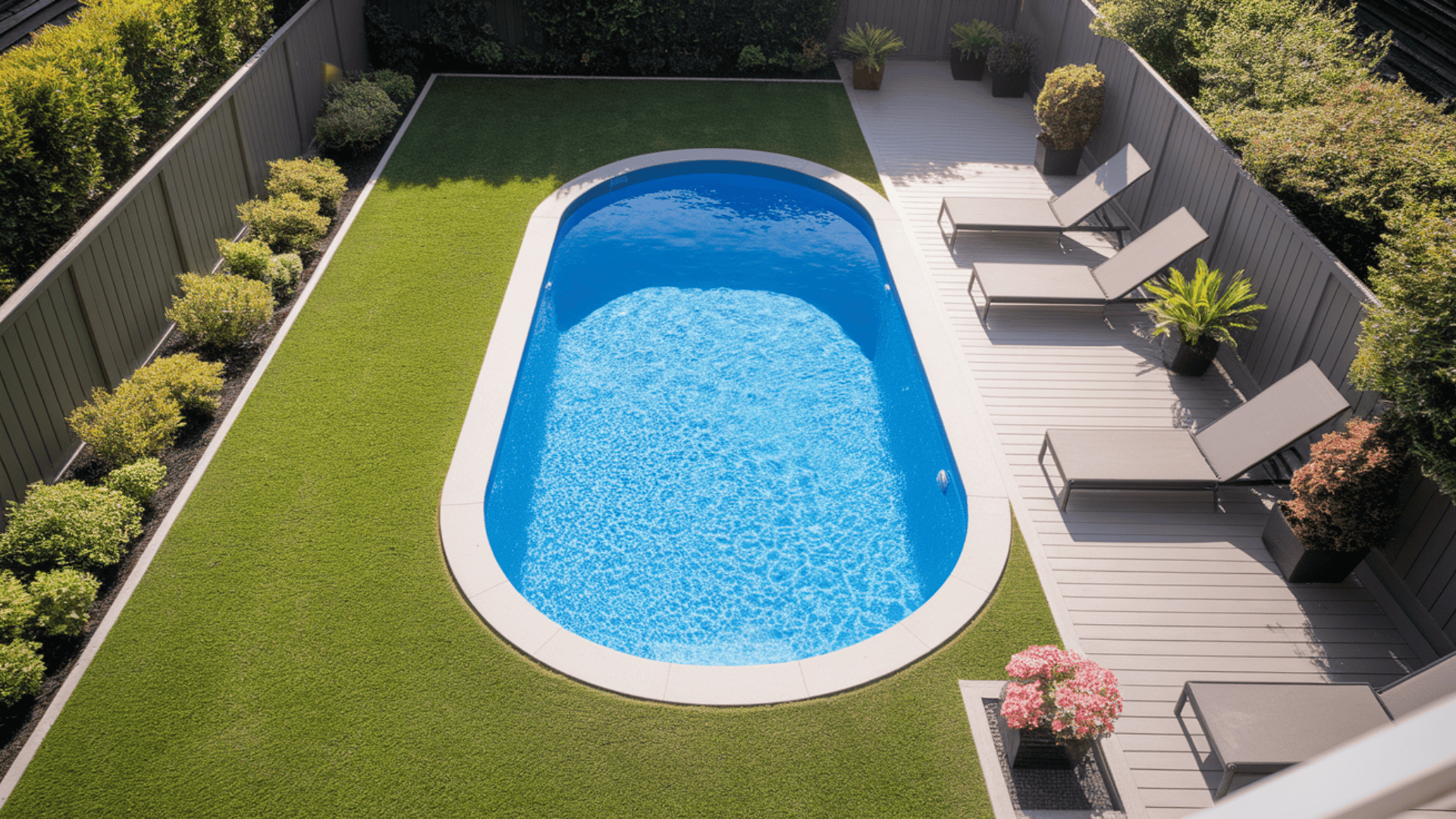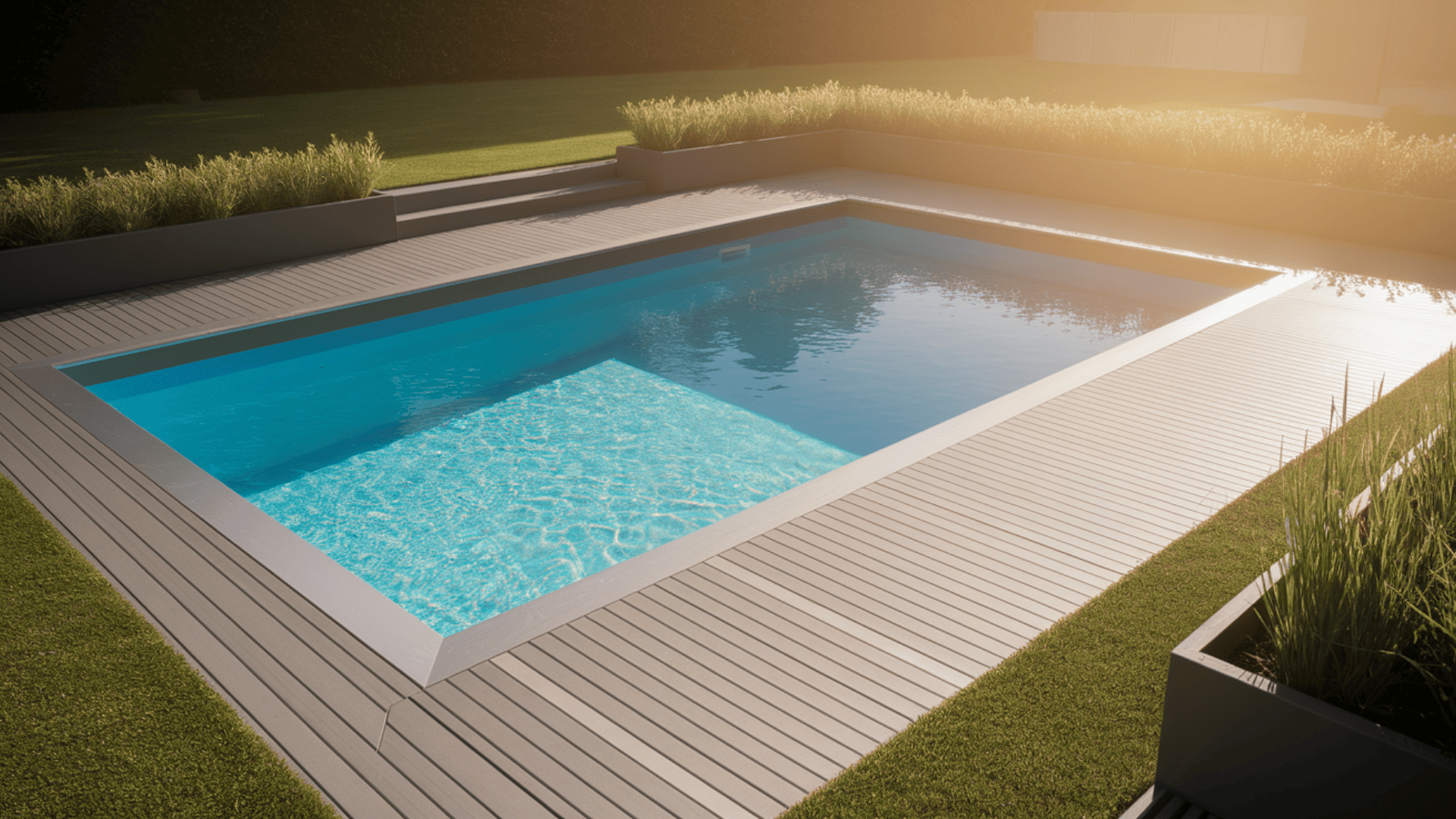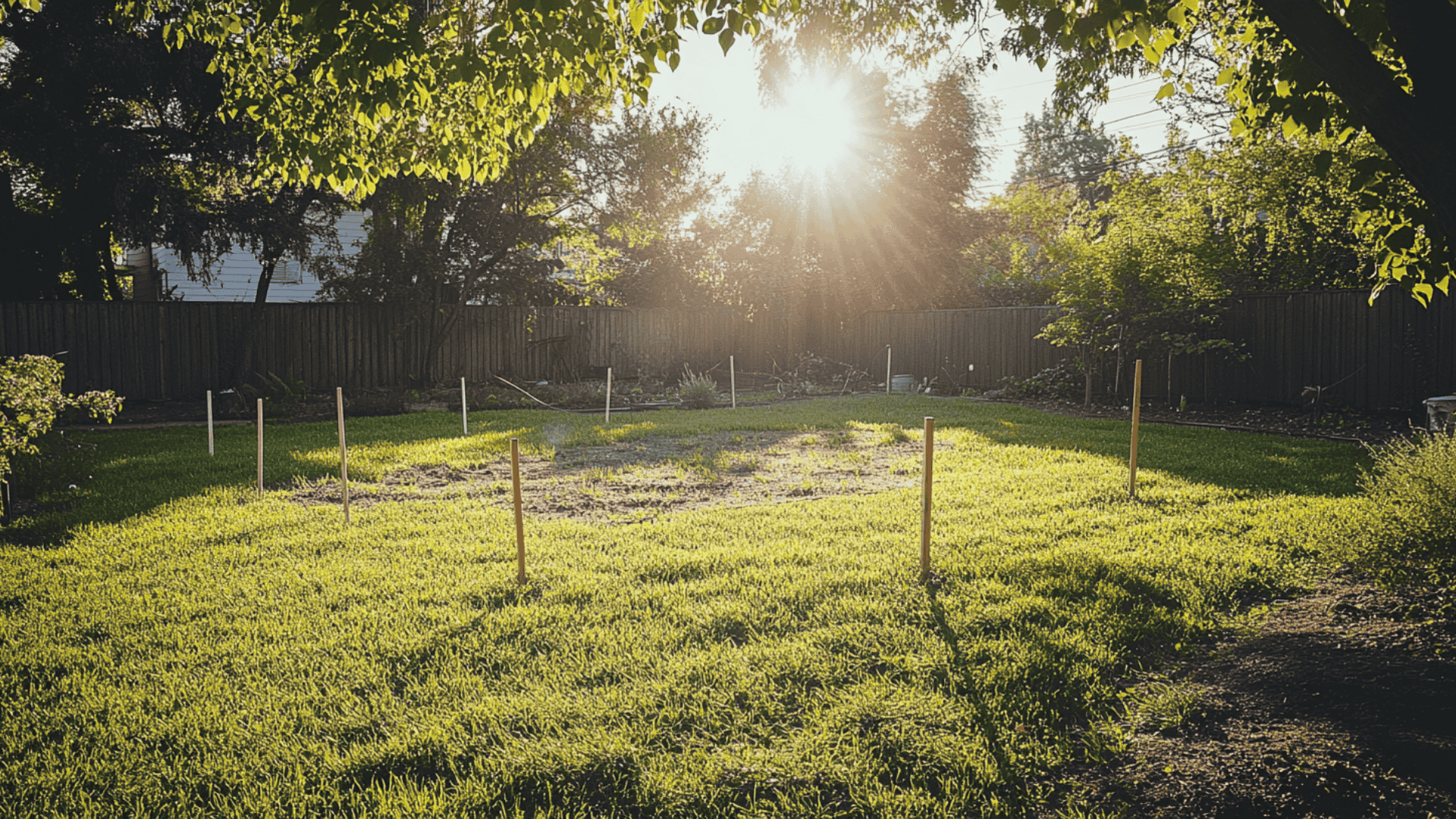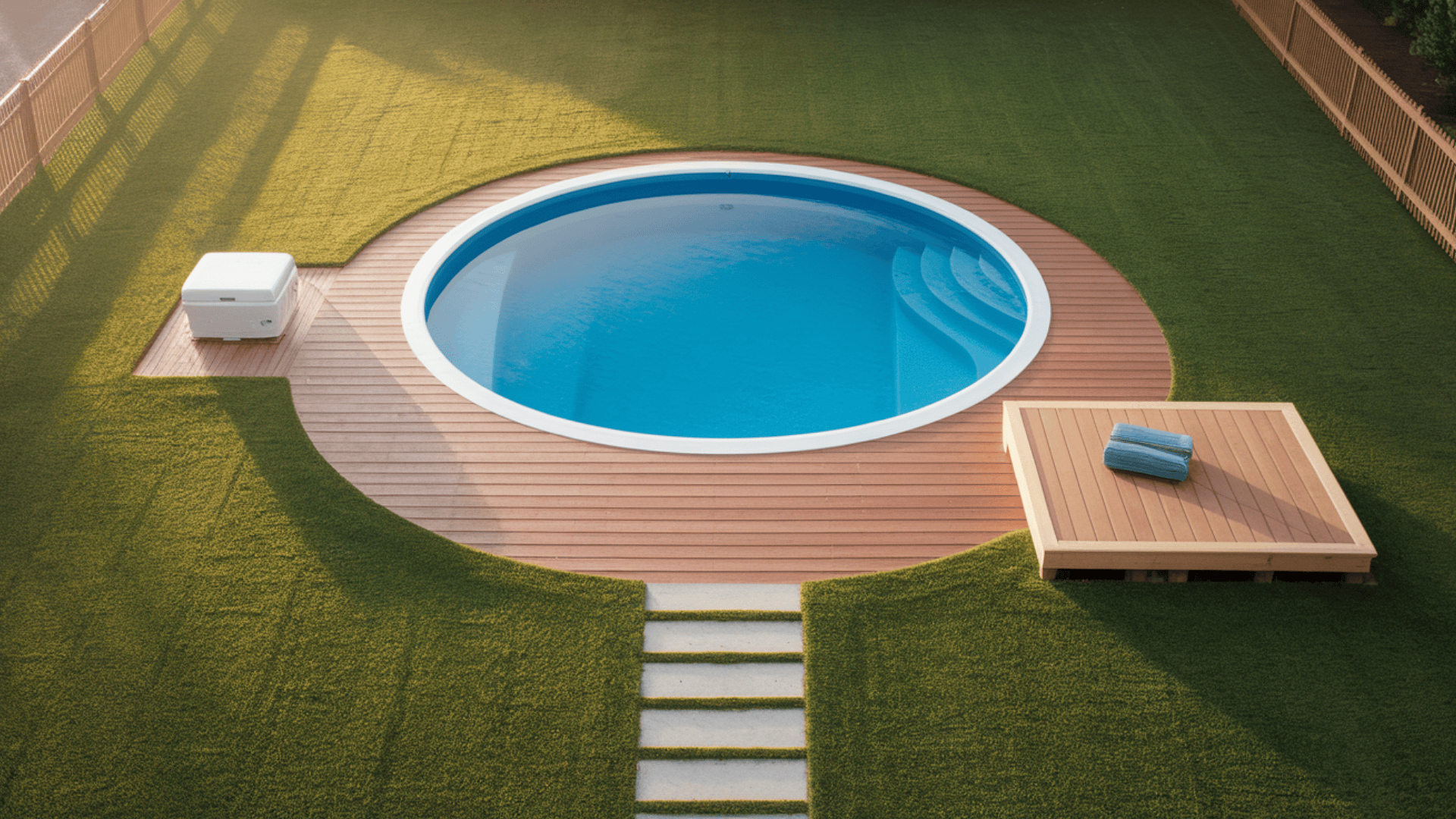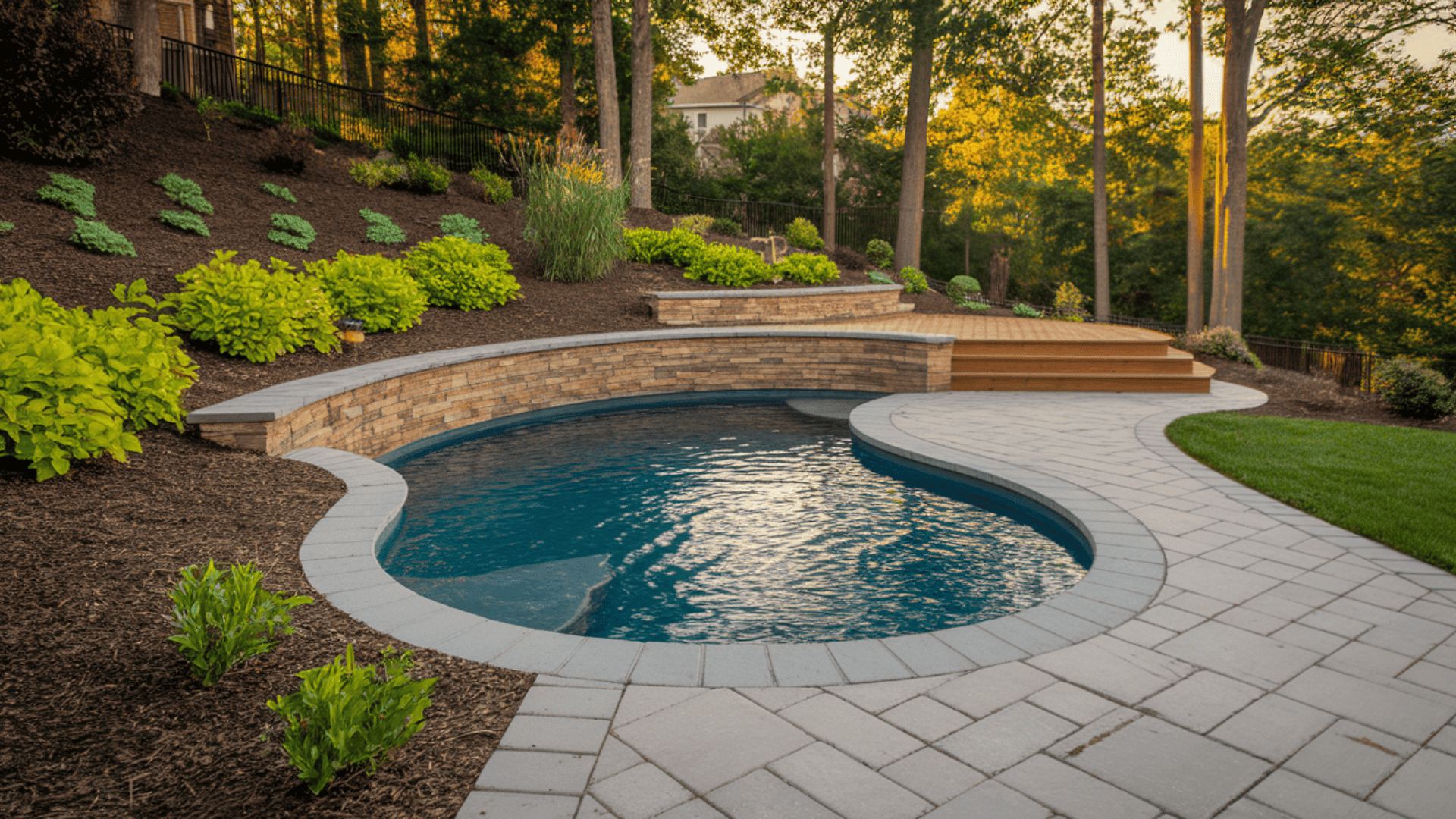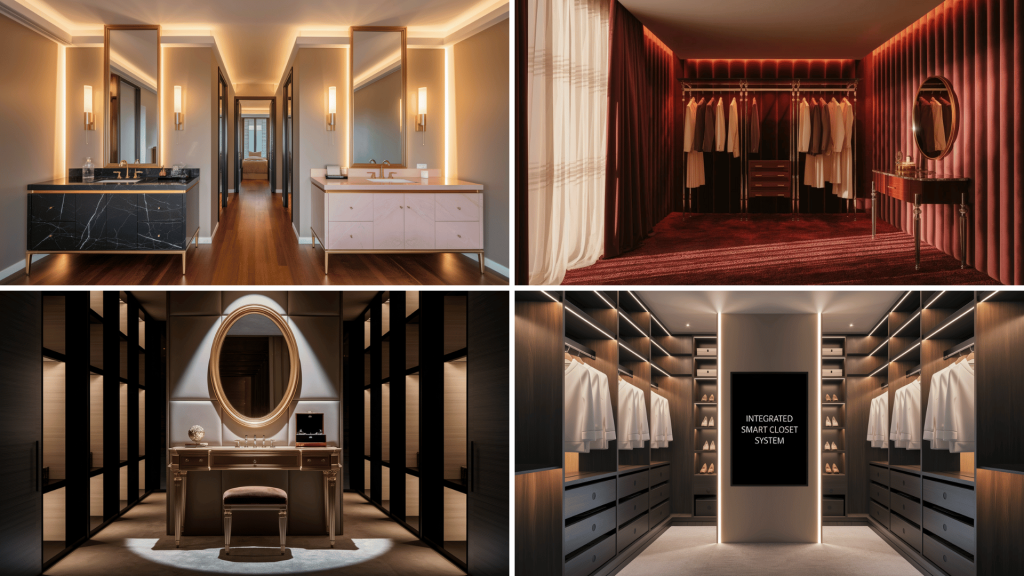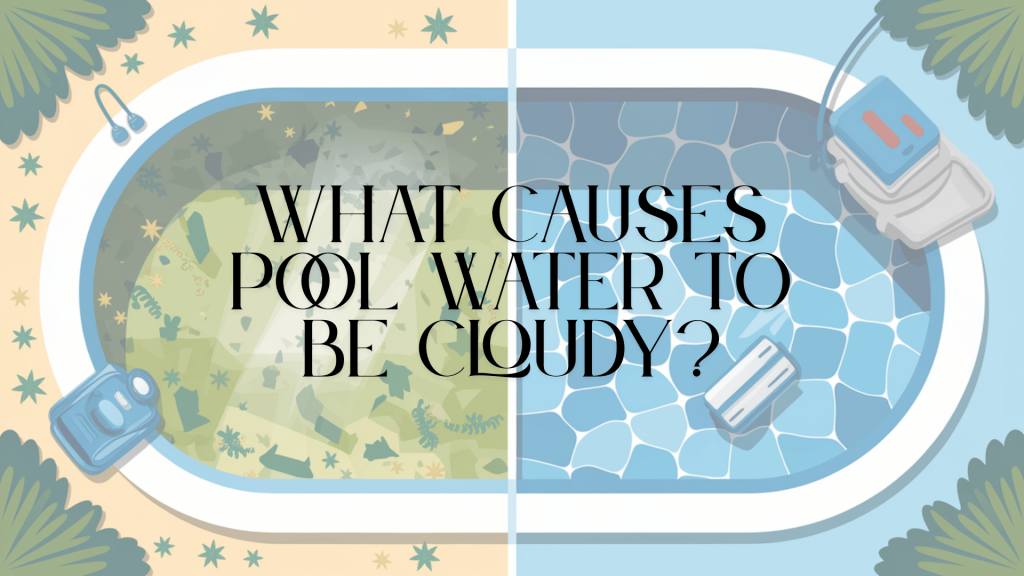Finding the perfect above-ground pool size can transform your backyard into a summer paradise. Pool size affects everything from cost to maintenance time to family fun.
Too small, and swimming feels cramped; too large, and you’ll lose yard space while paying more for upkeep. Round pools offer affordability in sizes from 12′ to 33′, while oval options fit narrow spaces beautifully. Rectangular designs offer the best swimming lanes, albeit at a higher cost.
Each shape has unique benefits beyond its dimensions, affecting water flow, heating efficiency, and the number of people who can swim comfortably.
Looking at real dimensions (not just water area) helps avoid setup surprises. With careful planning, you’ll select a pool that suits both your space limitations and swimming desires.
Understanding Above-Ground Pool Dimensions
The size of your above-ground pool impacts everything from your budget to how much time you’ll spend on upkeep. Most homeowners need to think about how many people will use the pool regularly and how much swimming space they’ll need.
Your yard size also sets natural limits on what’s possible, and some neighborhoods have rules about how much of your yard can be taken up by a pool.
Taking the time to consider these factors now will save you from wishing you’d gone bigger (or smaller) later.
- Round pools start small, at approximately 12 feet across, and range up to 33 feet for the largest models. These work well in most yards and are often the most budget-friendly option.
- Oval pools range from 12′ x 24 ‘to 18′ x 33’, making them perfect for narrower spaces where a round pool wouldn’t fit well.
- If you want to swim laps, consider rectangular pools, which typically come in sizes ranging from 12 feet by 24 feet to 20 feet by 40 feet.
Each shape has benefits beyond its appearance – they affect water flow, heating costs, and even the number of people who can comfortably swim at once.
Planning with these true dimensions helps prevent surprises during setup and ensures you’ll have a safe, functional pool area that fits properly in your outdoor space.
Round Above-Ground Pool
Round pools remain the most popular choice for many homeowners. They offer great value, simple setup, and fit well in most yard spaces. These classic options are available in a wide range of sizes to accommodate various needs.
Size Options and What They Offer
Round pools are available in sizes ranging from 12 feet to 33 feet in diameter. The smallest 12-foot pools hold approximately 2,500 gallons of water, sufficient for 2-3 people at a time. These fit nicely in tight spaces and cost less to fill and heat.
Moving up to 15-18 foot models is more suitable for small families, as they comfortably accommodate 4-6 swimmers.
Medium-sized pools, measuring 21-24 feet, are the most popular choice, offering enough room for 6-8 people without occupying your entire yard.
For those with space to spare, 27-30 foot options can accommodate larger gatherings and provide swimmers with ample room to play games.
Integration with Your Yard
The largest 33-foot pools hold up to 20,000 gallons and can fit 10-12 people easily – perfect for families who often host friends.
Remember that all these pools need an extra 3-4 feet of space on all sides for supports, walking room, and equipment.
Round pools work well as yard centerpieces, with decks often built to wrap around them partially or fully. Their shape makes them highly stable against water pressure and typically requires fewer supports than other designs.
Oval Above-Ground Pool
Oval pools combine features from both round and rectangular designs. They provide more swimming length while still fitting into spaces where rectangular pools may not be suitable. These versatile options have gained popularity for good reason.
Size Options and What They Offer
Oval pools range from compact 8′ x 12′ models to expansive 21′ x 43′ options. The most commonly bought sizes include 12’x24′, 15’x30′, and 18’x33′. These pools work wonderfully in yards where space is limited in one direction.
Their oblong shape fits better along property lines and effectively utilizes narrow spaces. Many swimmers prefer oval pools because they allow for short lap swimming that round pools can’t offer.
Integration with Your Yard
Modern oval pools utilize space-saving support systems that occupy less yard space than older models, with some designs employing straps that run under the pool rather than bulky side supports. This makes them easier to place near fences or other yard features.
Expect to pay between $3,000 for basic models and $12,000 for premium versions, which feature better walls and filtration.
While slightly more costly than round pools of similar water volume, many homeowners find the shape benefits worth the extra cost.
Rectangular Above-Ground Pool
Rectangular pools create a traditional swimming pool look. They maximize swimming space and provide straight lanes for exercise. These pools offer the closest experience to in-ground pools without the higher installation costs.
Size Options and What They Offer
Rectangular pools come in various dimensions to suit different family sizes and yard spaces. Here’s a breakdown of common options and what they provide:
| SIZE | WATER VOLUME | IDEAL FOR |
|---|---|---|
| 12’x20′ | 7,200 gallons | Small families |
| 12’x24′ | 8,600 gallons | 4-5 swimmers |
| 16’x24′ | 11,500 gallons | 6-8 swimmers |
| 16’x32′ | 15,400 gallons | Large families |
Rectangular pools typically feature standard depths of 48″ to 54″, making them the best option for serious swimmers who want to swim laps. The walls utilize strong support systems, often incorporating steel components, to withstand the water pressure.
Integration with Your Yard
These pools can work beautifully with attached wood decks that conceal the pool walls, creating a built-in look. While more costly than other shapes, they offer a more in-ground feel and provide better swimming paths.
Many homeowners place rectangular pools parallel to the house or property line to create a balanced, planned look. This shape also makes it easier to add features like slides or steps at the ends without disrupting swimming lanes.
Choosing the Right Pool Size for Your Needs
Selecting the perfect pool size involves thinking about both current and future needs. Your family might grow, kids will get bigger, and you might host more summer gatherings as time goes on. Planning with these factors in mind helps you make a choice you’ll be happy with for years.
Before buying, count how many people will use your pool regularly, then add a few more for guests. A good rule is 15-20 square feet of water per person for comfortable swimming.
Take careful measurements of your yard space, marking out the actual footprint with stakes and string. Many towns require pools to be at least 10 feet from property lines and to be positioned away from power lines and septic systems.
When measuring, think about:
- How much yard do you want to keep for other activities
- Where the sun hits during peak swimming hours
- How close the pool will be to your house
- Whether you’ll need to remove any plants or structures
- If your yard has slopes that need leveling
Most importantly, check local regulations before making a purchase. Some areas limit the amount of your property that can be used for a pool or require safety fencing that requires extra space.
Installation Space Requirements Beyond Pool Dimensions
The actual footprint of your pool setup extends well beyond just the swimming area. Understanding these extra space needs helps prevent tight fits and access problems later on.
The actual space you need extends well beyond the size of the pool’s water. For a 24 round pool, plan for at least 30′ of total space to account for:
- Pool walls add 4-6 inches of width on each side. Support systems extend 1-2 feet further.
- You’ll need flat ground at least 3 feet wider than these outer supports for safe access around the entire pool.
- Your filter, pump, and heater need a dry, flat spot within 10 feet of the pool.
- Most equipment pads require at least a 3′ x 3′ space, plus room for personnel to work around them during maintenance.
If you plan to add a deck, which makes using the pool much easier, you’ll need even more room. A modest wrap-around deck adds 3-4 feet to the pool’s footprint, while full-sun decks can double the total space required.
Lastly, think about the path from the street to your pool location. The parts need to be carried in, sometimes through narrow gates or around tight corners.
Budget Considerations for Different Pool Sizes
Pool costs vary widely based on size, materials, and features. Setting a clear budget before shopping helps narrow your options and prevents spending more than planned.
Remember that the best pool isn’t always the biggest or most costly—it’s the one that meets your needs.
| POOL TYPE | SMALL SIZE COST | MEDIUM SIZE COST | LARGE SIZE COST | MAIN COST FACTORS |
|---|---|---|---|---|
| Round | $1,500-$3,000 | $3,000-$5,000 | $5,000-$8,000 | Simplest to install |
| Oval | $2,500-$5,000 | $5,000-$8,000 | $8,000-$12,000 | More parts, supports |
| Rectangle | $7,000-$10,000 | $10,000-$17,000 | $17,000-$25,000 | Strongest structure needed |
The size of your pool directly affects not only the purchase cost but also the ongoing expenses. Bigger pools need more:
- Water to fill (and refill)
- Chemicals for treatment
- Energy for heating and pumping
- Time for cleaning
Material choice matters too. Steel walls last 10-15 years but may rust. Aluminum costs more but resists rust. Resin parts are the most expensive but offer better chemical resistance and are less prone to rust. Some wooden pools look great, but need more care and replacement parts sooner.
Don’t forget that larger pools require larger pumps, filters, and heaters, which are more expensive to purchase and operate. A good filter system for a large pool can add $500 to $1,000 to your setup costs.
Special Considerations for Semi-Inground Options
Semi-inground pools offer a middle path between fully above-ground and expensive in-ground options. This setup creates a more integrated look while keeping costs lower than those of traditional in-ground pools.
The partial burial also makes it easier to get in and out.
1. What Makes Semi-Inground Different
Some models can be partly buried in the ground, creating a look close to custom pools at a lower cost. Most can be sunk 1-2 feet, while special models allow burial up to halfway.
Most semi-inground pools come in the same size options as standard above-ground pools, but not all models can be buried. Always check the manufacturer’s specs before purchasing for this use.
2. Solutions for Sloped Yards
For sloped yards, semi-burying the pool on the high side can level the area without the cost of major earthwork. This can save thousands in site prep costs compared to fully above-ground options on uneven land.
The partly buried look blends better with landscaping and can be paired with strategic deck placement to hide any visible walls.
When selecting a pool for this setup, ensure that the manufacturer allows for partial burial – using the wrong type can void your warranty.
3. Important Planning Factors
Cooling tends to be better in partly buried pools, as the ground insulates the walls. However, you’ll need proper drainage around the buried portion to prevent damage during heavy rain.
The cost impact varies based on the amount of digging required, but plan to allocate an additional $1,000-$3,000 for excavation and special wall supports if you opt for this route.
Wrapping It Up
Selecting the right above-ground pool size strikes a balance between your yard space, family needs, and budget.
Round pools remain the most economical choice, with 21-24 foot models hitting the sweet spot for most families.
Oval pools solve narrow yard challenges while offering better swimming paths. Rectangular options create the most traditional pool experience but require stronger support systems and higher investment.
Remember that the listed dimensions show only water area—you’ll need 3-4 extra feet all around for equipment, access, and support structures.
For sloped yards, semi-inground options provide level installation without major earthwork. Take time to measure carefully, check local regulations, and consider future needs.
Your perfect pool combines the right shape, size, and setup to create years of backyard memories.


